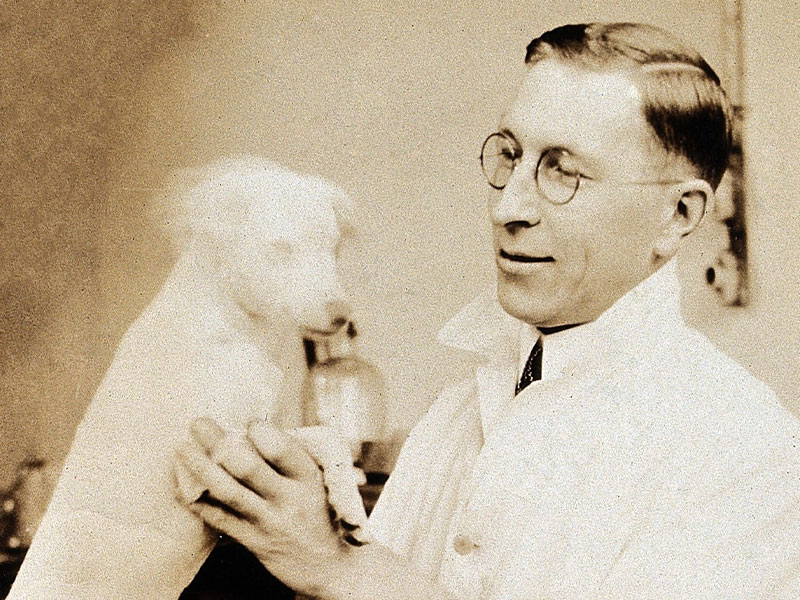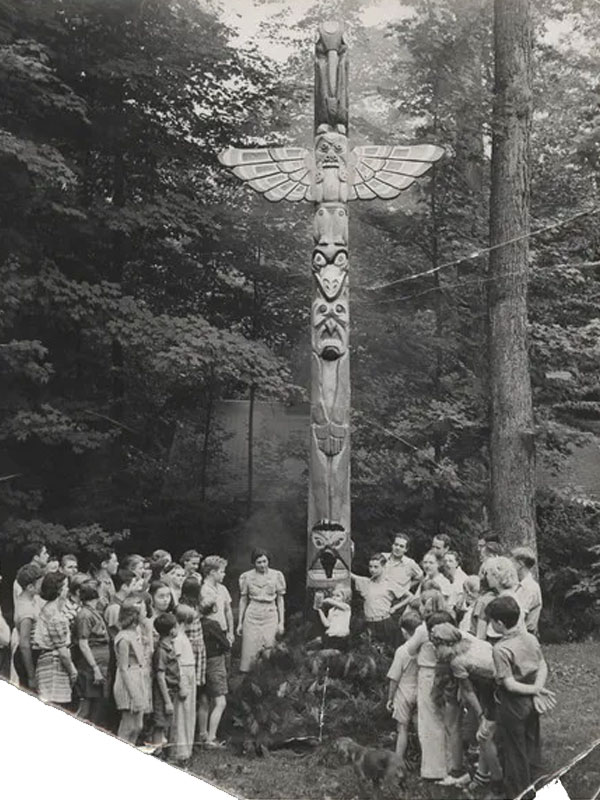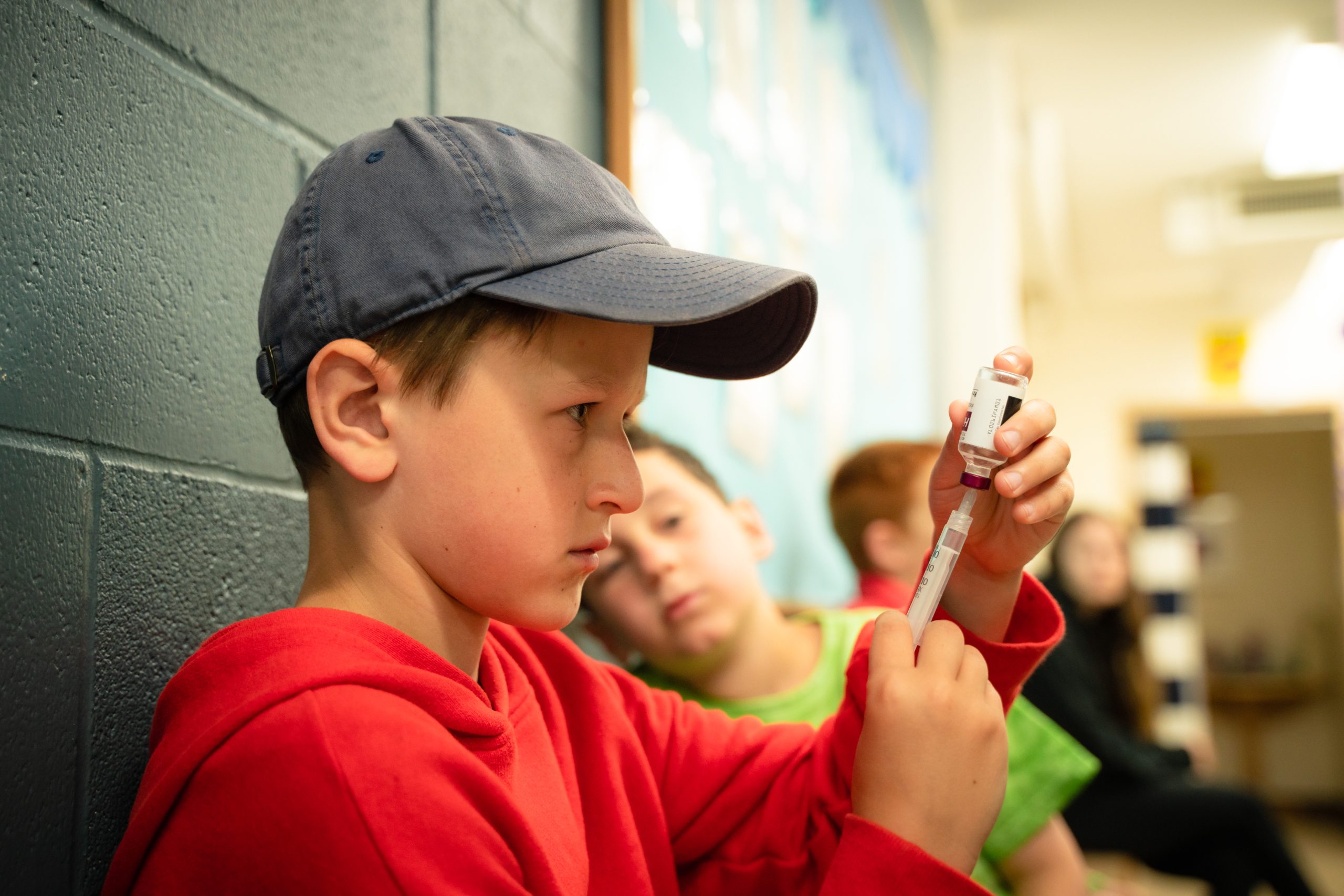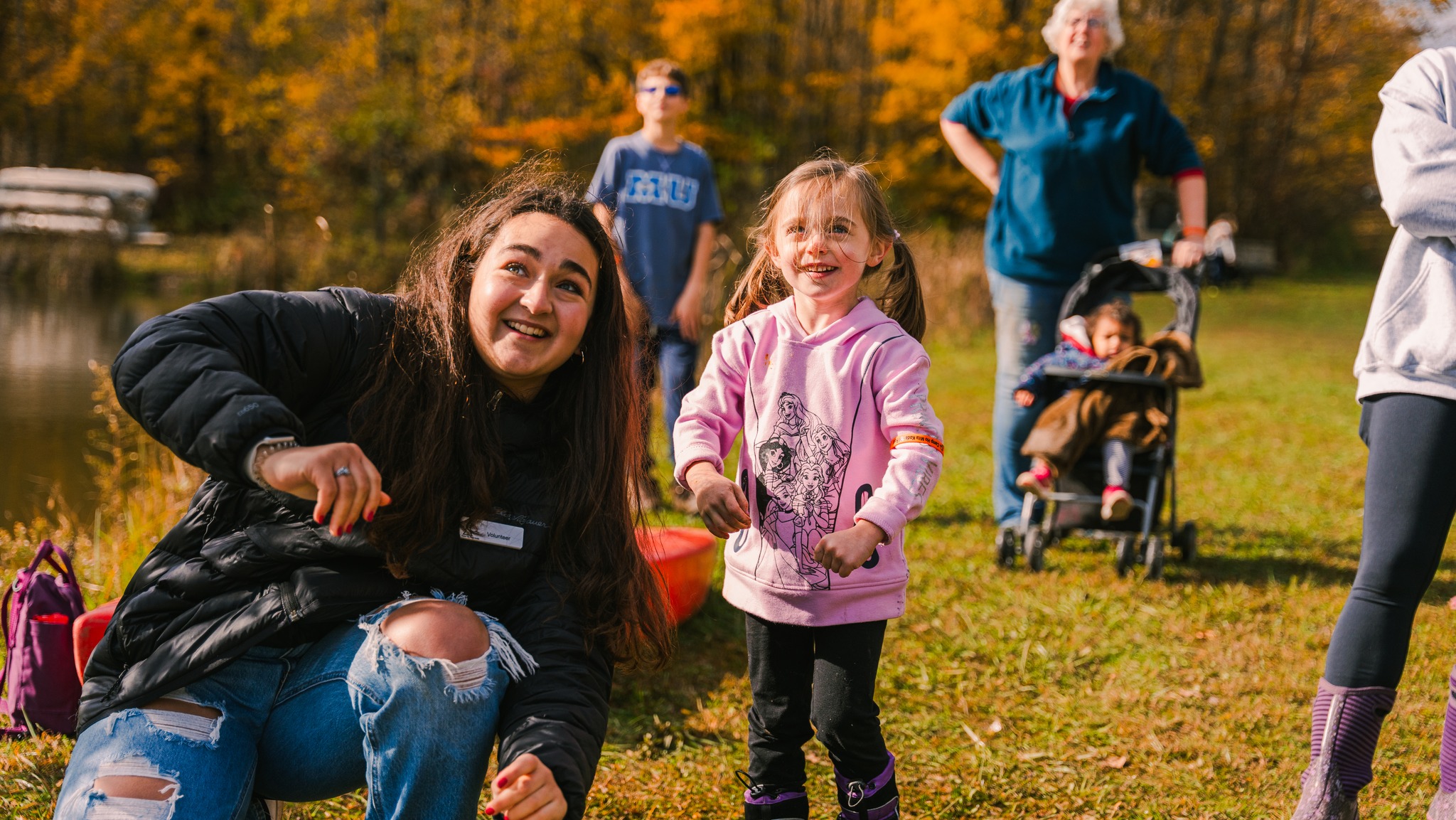The History of Camp Ho Mita Koda
Camp Ho Mita Koda started in 1929, when it was founded by Dr. Henry John and his wife Betty, but the beginnings of camp started years earlier…
In 1921, Dr. Frederick Banting and his team from Toronto, Canada, discovered the hormone insulin, a treatment for diabetes, in their research with dogs. Dr. Banting did not have a way to manufacture insulin in Canada in a form that would be usable by humans, so he reached out to Colonel Eli Lilly, the founder of the pharmaceuticals company that now bears his name. Their manufacturing facility in Indianapolis, IN was capable of producing the hormone, but Dr. Banting needed more information to properly configure the drug to work for humans. Lilly contacted Dr. John in Cleveland, Dr. Joslin in Boston, and Dr. Allen in New York to assist in refining and testing the insulin agent formula for human use. These three were the leading researchers, each struggling to find an answer to help treat this fatal disease in children. By 1923, Lilly had what was needed to begin commercial production of insulin.


A few years later, a medical school professor and physician in southern Ohio, Dr. Charles Beaman, was dealing with his own teenage daughter’s diabetes diagnosis, Sue Beaman. Dr. Beaman learned of the work being done at the Cleveland Clinic and the use of an anti-diabetes agent known as insulin to manage the blood sugars of diabetic individuals. He contacted the Clinic and was sent via rail a vial of insulin and instructions for use. Dr. Cecil Striker, a local doctor conducting insulin trials out of Cincinnati General Hospital, and a co-founder of the ADA in 1939, administered the insulin to the 13-year-old girl, who had fallen into a diabetic coma. Her older sister, Betty, sat at her bedside to witness the miracle effects of the insulin reviving her sister. At the time, Betty was a student at the University of Cincinnati. This moment furthered her resolve to become a doctor, even though her father was not fond of the idea of a female physician.
A few years later, Betty graduated and was accepted into what is now known as Case Western Reserve University. She moved to Cleveland during the summer of 1928 and worked in a lab at the Cleveland Clinic to help pay for her education. There, she met and soon married Dr. Henry John. They married on the grounds of his summer cottage in Geauga County, Ohio, where Camp Ho Mita Koda began.
They were witnessing the power of insulin to keep children alive, but desired to help the kids live a higher quality of life. After a brush with death during an explosion at the Cleveland Clinic in 1929, Henry and Betty were moved to act and they brought 6 children to their summer home for the first year of camp. One of those children was Betty’s younger sister, then 16 and the first unofficial “Counselor In Training!”


Betty worked with the children every day and Dr. John came out every night to check in, take blood and urine tests and adjust the treatment protocols for each camper. It was a lot of work managing the disease for 6 children, ranging in age from 2 to 16, but the John’s were committed to giving their parents a break from the around the clock challenges of managing type one diabetes, and giving the children a chance to have a more normal childhood, if only for a week.
Camp at Ho Mita Koda has been running in much the same way since 1929. Primary medical oversight and care is now provided at Camp Ho Mita Koda by University Hospital/Rainbow Babies, The MetroHealth System, Akron Children’s, and the Cleveland Clinic. Countless other companies, organizations and individuals support Camp Ho Mita Koda, inspired by both its history as the first diabetes camp in the world and the services now provided to thousands of children each year. The camp has trained countless medical professionals and served the diabetic community with welcoming arms year after year.
As this new era of camp begins, the spirit of Dr. Henry and Betty John continued to live within the camp and all those dedicated to keep Ho Mita Koda open to meet the needs of children fighting diabetes and looking for an opportunity to live a normal, carefree life.
In the words of Betty herself…”I, like Henry John, do not believe it is enough to keep diabetic children alive. They must be given the chance to share the healthy, normal experiences of life. Ho Mita Koda is one of them!”



